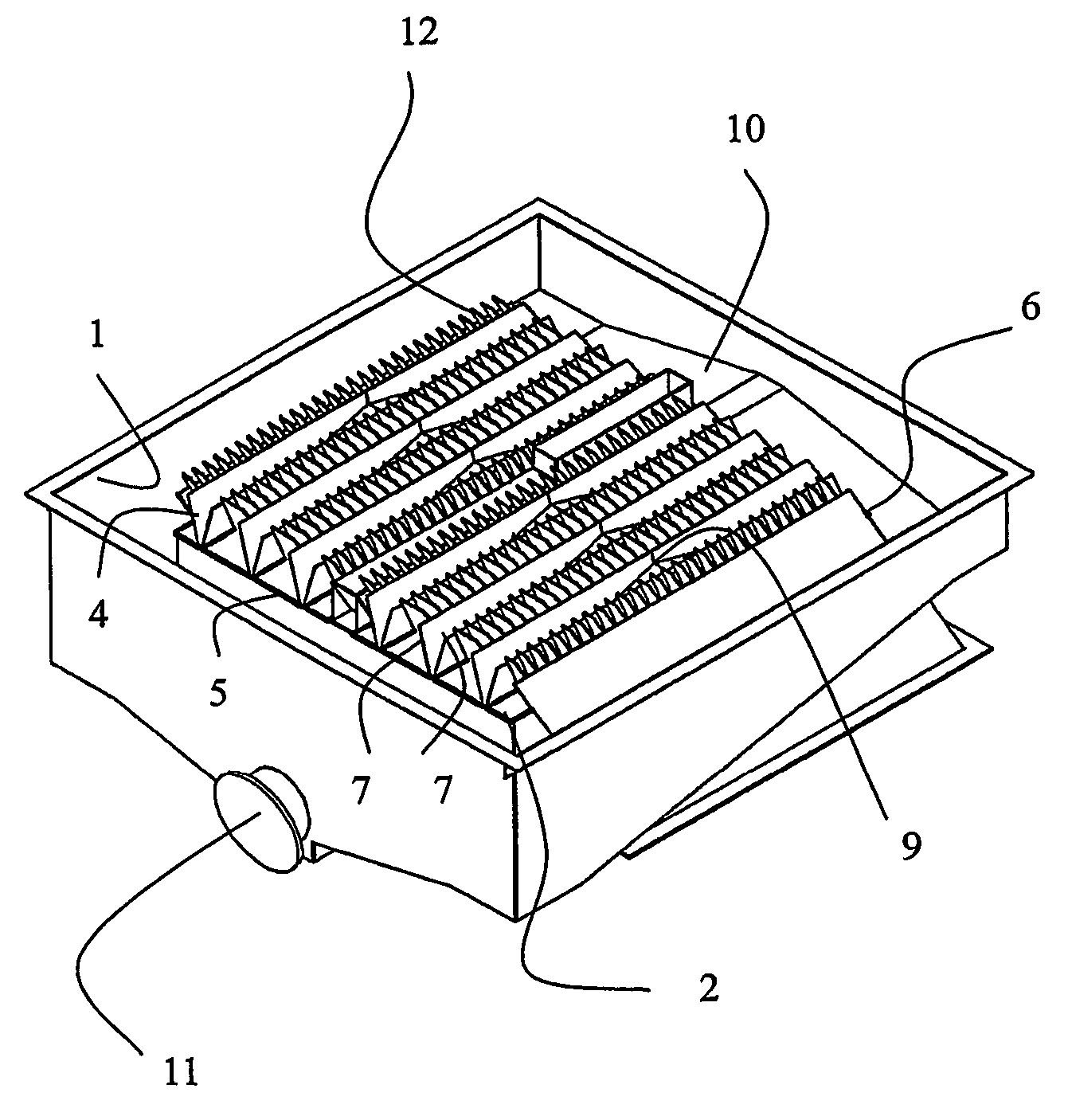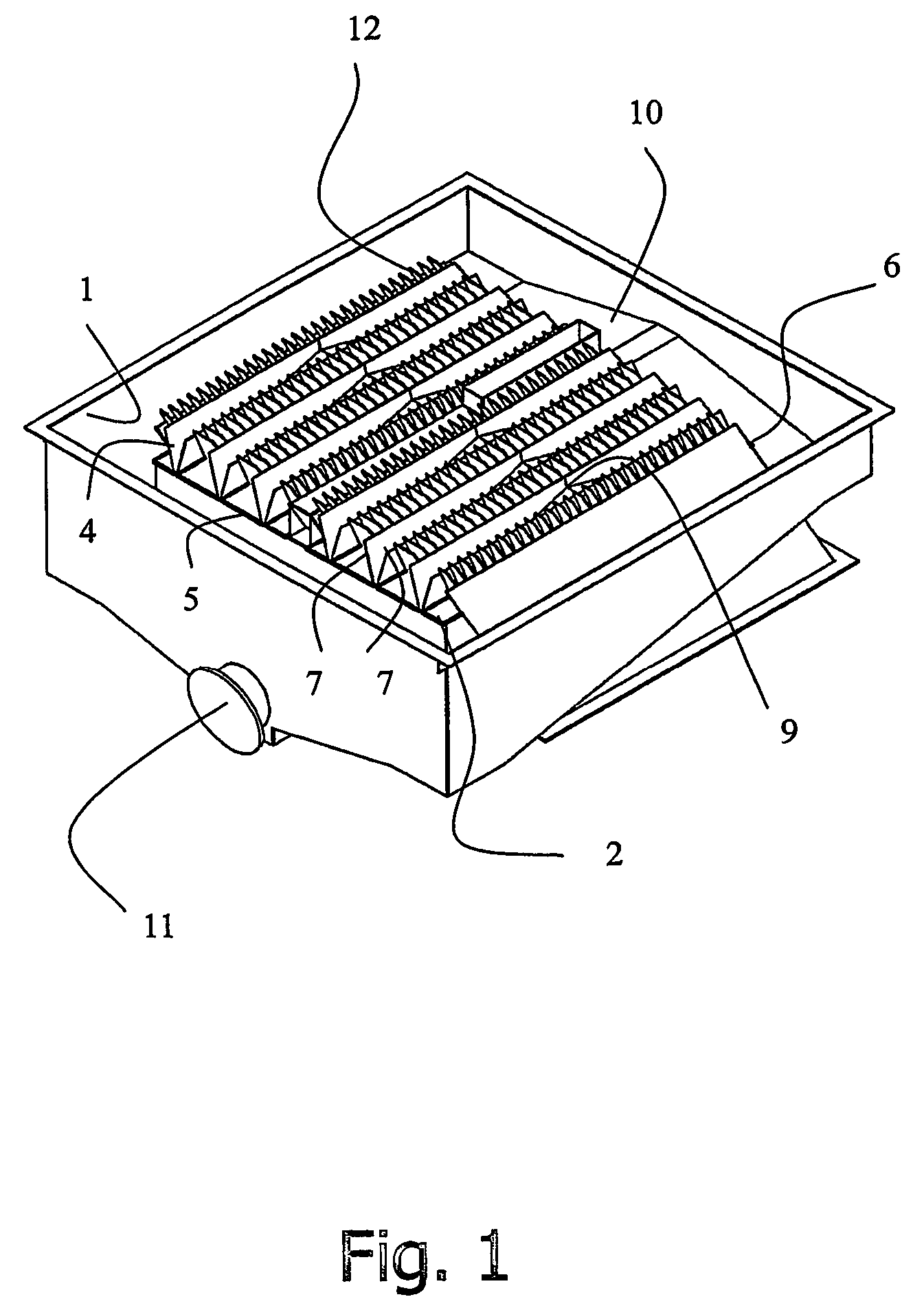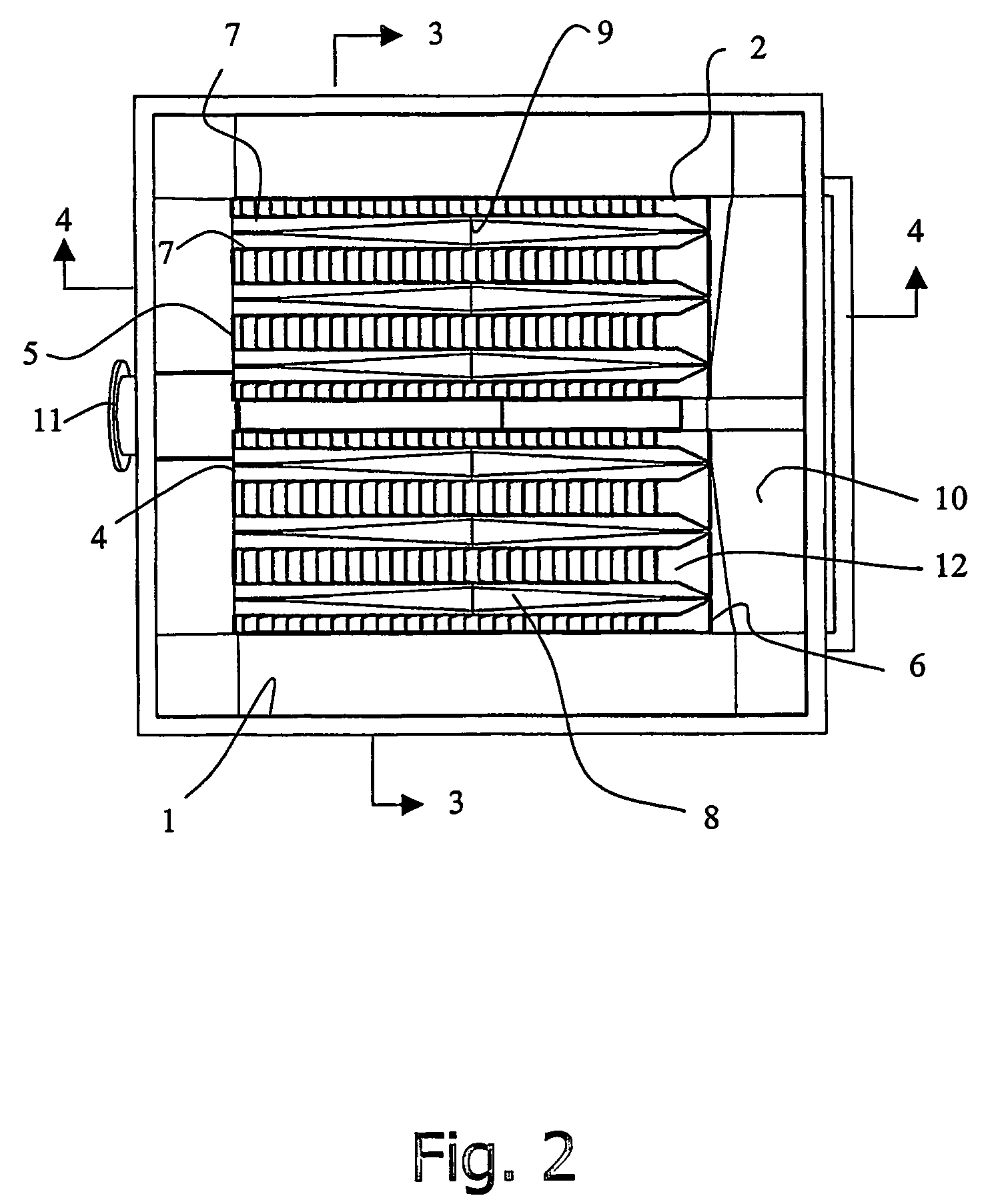Overflow launder
a technology of overflow laundering and overflow, which is applied in the direction of solid separation, feed/discharge of settling tanks, wet separation, etc., can solve the problems of poor separation quality and downward flow, and achieve the effect of reducing horizontal distances and preventing flow interactions
- Summary
- Abstract
- Description
- Claims
- Application Information
AI Technical Summary
Benefits of technology
Problems solved by technology
Method used
Image
Examples
Embodiment Construction
[0031]Referring to the drawings, the overflow launder includes a primary trough 1 surrounding the upper rim 2 of a reflux classifier having an upper set of plates 12. An array of secondary troughs 4 extend across the fluid surface of the reflux classifier from one side 5 of the rim to the opposite side 6 of the rim. This allows fluid to drain from either end of each secondary trough into the primary trough.
[0032]The secondary troughs include a pair of elongate lips 7 forming overflow weirs into the trough 4. The lips of each secondary trough are substantially level, as seen in FIG. 3.
[0033]The secondary troughs are channels that are “v” shaped in cross section. They include a false floor 8 that extends along the channel. The false floor is relatively higher in the centre region 9 of the channel and relatively lower toward each end of the channel. This forms a raised internal portion at an intermediate position in the trough, and relatively lower portions toward each end of the troug...
PUM
| Property | Measurement | Unit |
|---|---|---|
| elevation | aaaaa | aaaaa |
| perimeter | aaaaa | aaaaa |
| hydrophobic | aaaaa | aaaaa |
Abstract
Description
Claims
Application Information
 Login to View More
Login to View More - R&D
- Intellectual Property
- Life Sciences
- Materials
- Tech Scout
- Unparalleled Data Quality
- Higher Quality Content
- 60% Fewer Hallucinations
Browse by: Latest US Patents, China's latest patents, Technical Efficacy Thesaurus, Application Domain, Technology Topic, Popular Technical Reports.
© 2025 PatSnap. All rights reserved.Legal|Privacy policy|Modern Slavery Act Transparency Statement|Sitemap|About US| Contact US: help@patsnap.com



